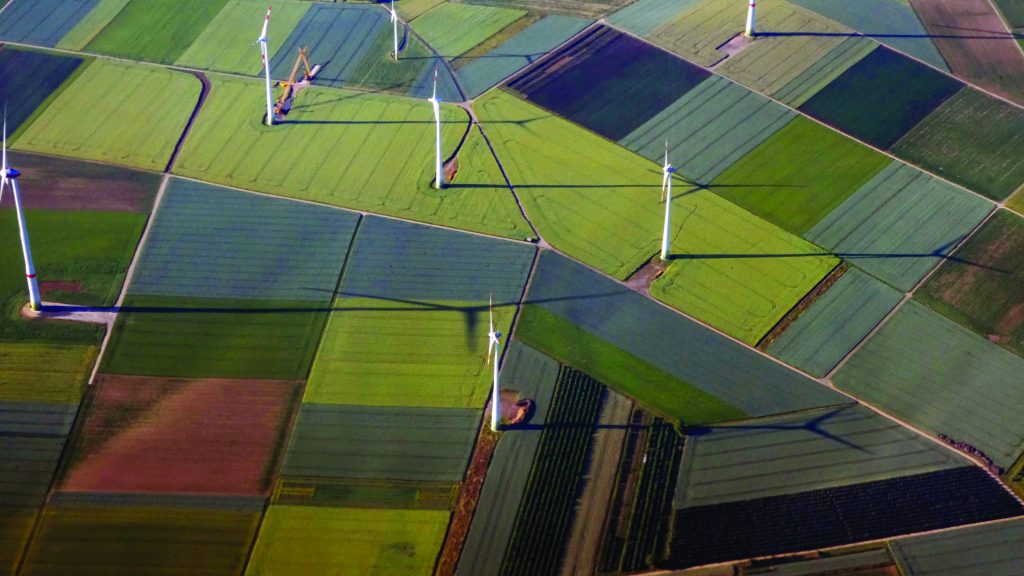

Friends Provident Foundation began life as an independent charity endowed by Friends Provident plc in 2004 from unclaimed shares with a mission to support a fair and sustainable economic system that works for all. It has an endowment of £33.5 million.
Colin Baines was appointed as the Foundation’s first Investment Engagement Manager in 2016.
How does impact integrate across your different activities?
My role was created to align and utilise the Foundation’s endowment in support of its mission and since then we’ve described ourselves as a capitalised charity. That means we seek to use all of our capital and leverage every power point to maximise impact – taking a thematic strategic approach that integrates grant-making, social investment, and shareholder and asset manager engagement.
How has this integrated thematic approach manifested itself?
A current thematic priority is energy market transition, with support for a Just Transition and community energy. That’s involved using our grant-making to support the Grantham Research Institute at the London School of Economics in its research programme, ‘Financing a Just Transition’. Outputs from that informed our shareholder engagement with utility companies, which has led to us securing the world’s first formal Just Transition strategy from SSE plc in 2020, followed by EDF, Centrica, and Scottish Power in 2021.
We have a grant portfolio in this area, including community engagement exploring locally-led Just Transition, new community energy models, and policy advocacy, and have a portfolio of direct impact investments in community energy co-ops. In addition to direct shareholder engagement, we are also engaging asset managers to integrate the Just Transition into their climate strategies.
How is the endowment currently invested?
We currently have a 10 percent carve out for social and impact investments, this includes £2 million invested in Snowball, the impact investment fund, and a further £1 million in direct investments such as community energy projects. £10 million is invested with Cazenove Capital in a mixed impact/ESG fund, and the remaining £19 million is invested in a legacy ESG fund, which is currently managed by BMO Global Asset Management but originally was the UK’s first ethical investment fund launched by Friends Provident in the mid-1990s.

How did you select Cazenove as your main impact manager?
We wanted to bring investment management out of the shadows and share emerging best practice on impact and ESG with other foundations. So, we joined with Joffe Trust and Blagrave Trust to launch an open, competitive tender for a £33 million mandate that we dubbed the ‘ESG Investing Olympics’. We received 60 proposals from managers with collective AUM of £15 trillion. A shortlist of five managers presented at the Royal Institution in London in March 2020 to an audience of 150 investors and grantees. Each manager was assessed for intentional social and environmental impact, standards of ESG integration, engagement and voting record, in-house expertise, and impact reporting.
What were the factors behind choosing Cazenove?
They were very impressive. We did have a tough decision between choosing a positive disrupter or evolving incumbent and chose the latter. If they do something innovative in the market, it is much more likely to get replicated and less likely to be dismissed as ‘niche’.
Cazenove also accepted that we are going to be radically transparent about everything that we learn on this process. We are going to push them to go as far as they can. We’re going to report publicly on how we think they’ve performed. But Cazenove seem to have the culture in place where they welcome that and recognise that we’re all on a journey.
You are very keen to share your learning with others.
Absolutely – because lots of foundations don’t have the in-house expertise to tell if something is greenwash or not, and asset owners generally need to work together to secure higher standards. After the ESG Olympics, we publicly released our high-level assessment of the 60 proposals we received, identifying sector trends and gaps, and making recommendations for the minimum standards that foundations should look for when tendering for ESG or impact funds. We also co-organised the COP26 ‘Declaration of Asset Owner Expectations of Asset Management’ – a set of nine principles that attracted 27 founding signatories with £7 billion of investments.

Do you make grants and investment available to the same projects?
Organisations or projects won’t often get grant-funding and investment at the same time but they may over time. A great example is Riding Sunbeams, a B Corp that is enabling trackside, community-owned renewable energy to power the railways, and has facilitating a Just Transition embedded in its Articles. That started off as a grant to the
climate charity Possible and Community Energy South. Then it reached that difficult startup phase between proof of concept and commercial proposition. So we invested to help bridge that gap. It is expected to start its first solar farm project in Spring 2022.
Are you comfortable that you can deliver a financial return as well as deliver impact?
I think it’s a myth that you can’t deliver a good risk-adjusted return from impact investments. For example, we invested in a two-turbine windfarm in a former coal-mining community in South Wales called Awel Co-op, which is owned by the community and operates for its benefit. Over its lifetime, Awel is going to generate £3 million to alleviate fuel poverty in those valleys. It had a forecast investment return of 5% and it’s paid out every year. Our impact funds with Snowball and Cazenove Capital are producing market rate returns.
Of course, you may need to be patient with some investments: we won’t see a financial return from Riding Sunbeams for a few years. But it’s so well aligned with what we’re trying to do that we’re perfectly prepared to wait.
How would you encourage other foundations to get involved in impact investing?
First, I’d encourage every foundation to think about mission risk, in terms of what’s in their endowment and how it could be undoing good work elsewhere. Second is missed opportunity – trustees need to think about the entirety of their capital and how it could be used to progress charitable objectives: impact investing is a key way to do that.
If trustees are holding back because their advisers don’t understand ESG or impact, bodies like the Charities Responsible Investment Network offer valuable support such as independent assessment of managers. Or if the demands of doing impact investment directly are too much, funds like Snowball invest across the SDGs and provide a low-risk, high-impact multi-asset solution. Whatever your organisation’s resources, there’s no excuse not to be thinking about impact.

